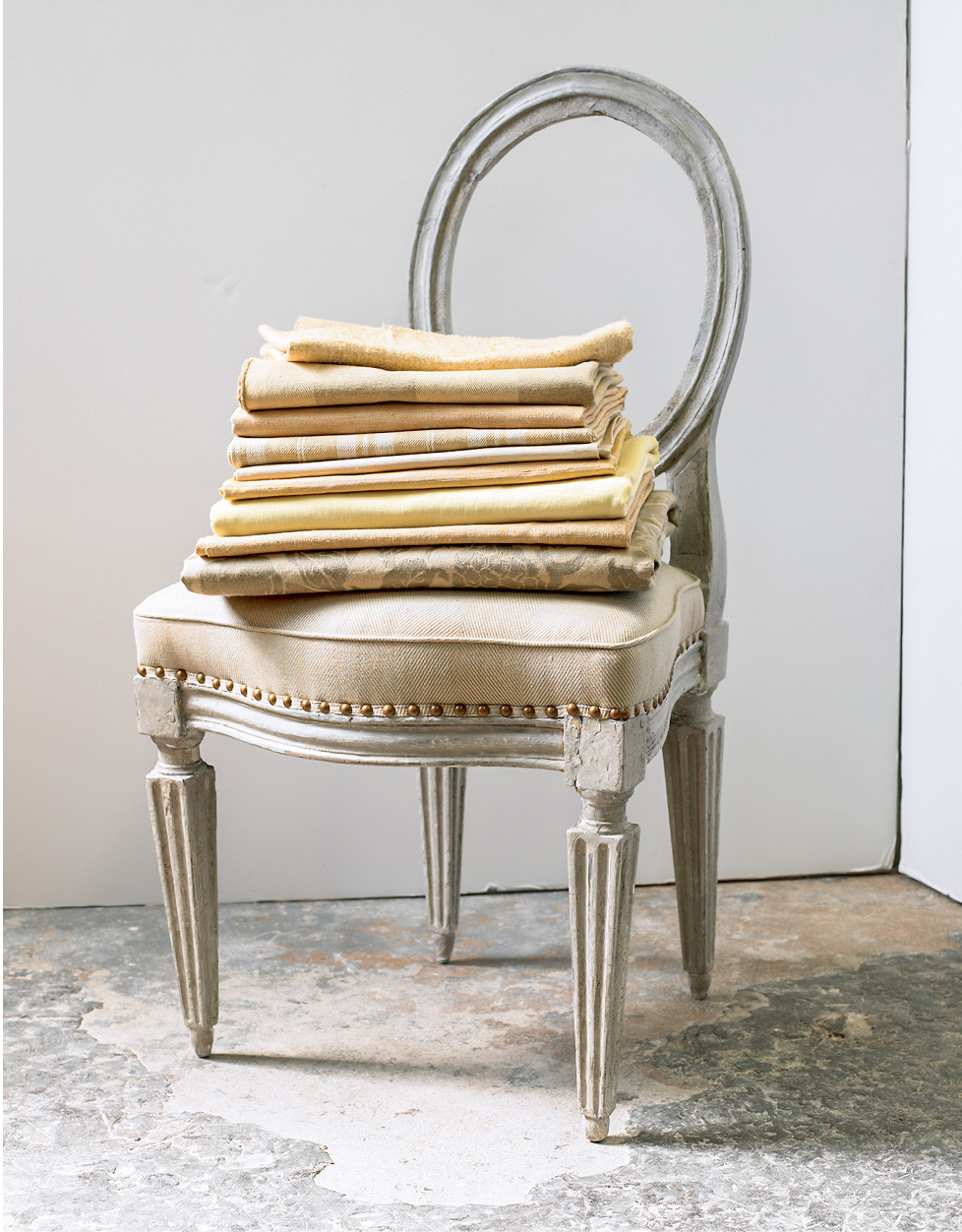
How TO
RE-COVER A CHAIR
Before you toss out that tattered chair, consider giving it a fabric face-lift—especially if it’s a family heirloom or sturdy antiquing score. Whether you hire out the job or tackle it yourself, there are a few important elements to keep in mind.
Determining Quantity
Figuring out fabric amounts is tricky and depends on factors besides the furniture’s dimensions—the shape of the piece, the pattern of the cloth, and any extras such as welting, to name the most common considerations. An average club chair, for example, requires about 6½ yards of fabric. See the chart on page 105 for more estimated guidelines.
Choosing a Fabric
There are countless fabrics to choose from in a variety of sizes, patterns, and materials—all factors that will affect how much you need. Upholstery fabrics range in price greatly, with some costing upward of $350 per yard, so being able to estimate how much of it you’ll have to buy will help you make an informed (and budget-minded) decision.
Width
In the United States, the most common width for upholstery fabric is 54 inches; however, 48-inch-wide fabric is found both here and in Great Britain, and 40- and 42-inch widths are typical for many imported fabrics, like Indian silks. Other fabrics, such as garment textiles (less often used in upholstery), may be sold in 60- and 72-inch widths. Choose 54-inch-wide fabric when possible, as this will produce the least cutting waste, and upholsterers’ yardage estimates assume this width.
Pattern
Solid fabrics are the simplest to work with. Stripes, plaids, and other patterns must be matched at the seams. A smaller, evenly spaced stripe or plaid should not, however, require you to purchase more yardage. If you want welting—the cord that covers the seams—from the same fabric, you’ll need to purchase significantly more. Consider choosing a solid fabric for welting that complements your patterned piece.
Repeat
Depending on the repeat of the pattern, you may need to buy extra yardage. Some patterns have very small repeats, 3 inches or less; others are much larger. In general, an 18-inch repeat means you’ll need about 20 percent more fabric; a 27-inch repeat means you’ll need 40 percent more, and so on.